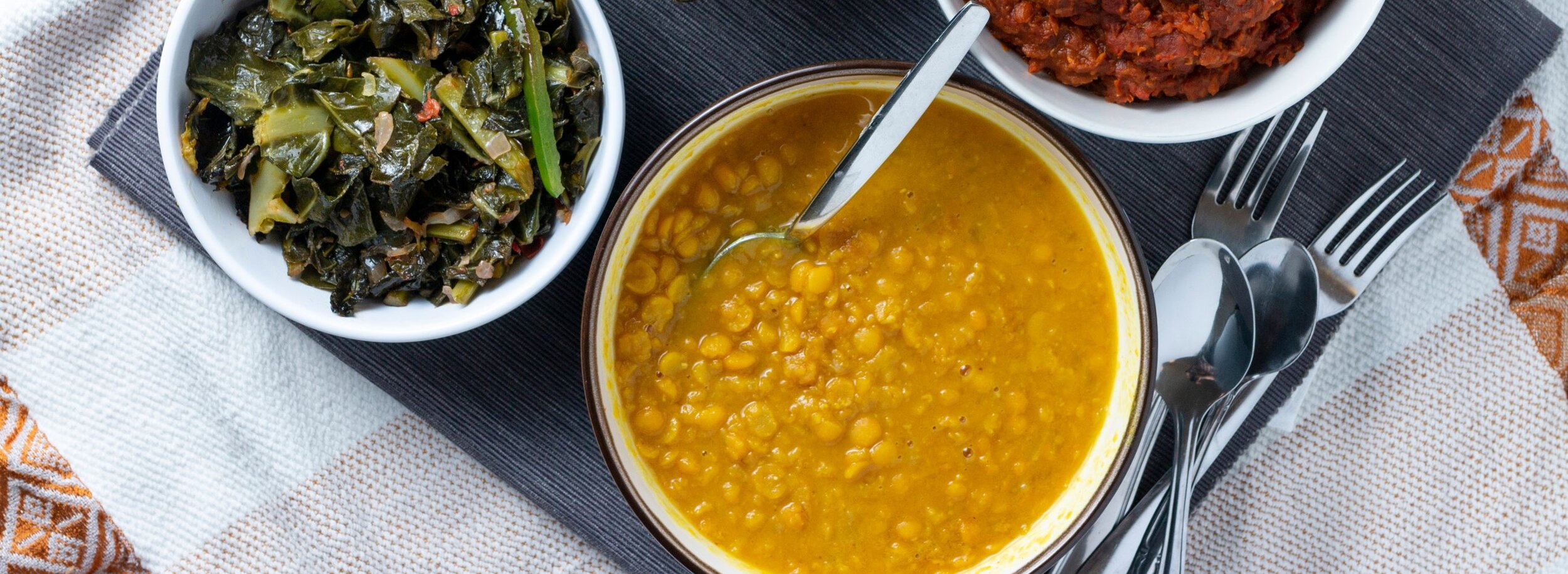If you’ve ever wondered how to cook Ethiopian food at home, the sauces are a good place to start. Even though cooking Ethiopian foods might seem daunting, it’s not. When you look at the variety of the stews in Ethiopian restaurants, you know, the big platter with many dishes on top of the injera (flat bread), and if you think about making all those dishes it may seem overwhelming. The truth is many of those stews are made with similar base sauces.
One of the most common Ethiopian sauces is Alicha Kulet, or turmeric sauce. Alicha means “mild” and kulet is “sauce.” Unlike red pepper sauces made with the Ethiopian chili known as berbere, turmeric sauce isn’t spicy – making it an excellent entry point into Ethiopian food.
It’s so mild and attractive to the palate that children like it. As a child in Ethiopia, when we were given the choice, I remember asking for it over the red pepper sauce: “I want the bicha (yellow).” You can’t miss its bright yellow color when the platter of dishes is brought to you!
This sauce is a delicious staple of vegan Ethiopian cooking. Alicha kulet is common on tables during fasting season, Lent, and throughout the year on fasting days when we eat only vegan food. The savory sauce can be used as the base of a simmered stew or soup, as a burst of extra flavor in a stir fry, or as a deep flavor in slow-cooker meals.
Made from a collection of common aromatic ingredients, turmeric sauce is an easy way to add excitement and character to any basic protein. My favorite recipe to share with new cooks of Ethiopian food is Kik Alicha, or yellow split pea stew made with turmeric sauce. It’s also a great recipe because it’s easy to swap in different proteins – ground beef is a common choice for people who eat meat – and to serve with different sides such as potatoes.





